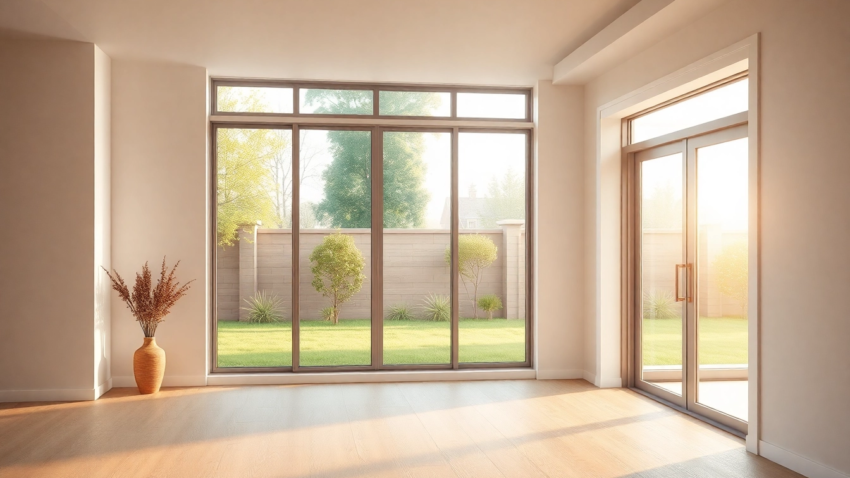
Modern Day Window: Window and Door Replacement for Comfort, Style, and Energy Efficiency
From initial assessment to finished installation, a deliberate approach yields durable performance. For a practical overview and resources, visit window and door replacement resources from Modern Day Window.
Understanding Window and Door Replacement
What is window and door replacement?
Replacement means exchanging existing units with new ones, using retrofit (inside the current frame) or full-frame replacement (including surrounding framing). It aims to improve performance, energy efficiency, and security while preserving the home’s layout. Distinguish replacement from new construction, which often involves larger openings and more structural work. In most homes, retrofit replacement suffices for code compliance and comfort, while full-frame may be needed when frames are severely damaged or rot is present.
When to replace vs repair, and how to decide
Consider replacement when drafts persist after weatherstripping, glazing is failing, rot or moisture robs framing strength, or hardware is unreliable. Repairs can address isolated issues, but persistent problems usually warrant replacement. A professional assessment helps quantify comfort gains, potential energy savings, and the typical payback timeline to guide whether to repair, retrofit, or replace.
Key benefits: energy efficiency, security, and curb appeal
- Energy efficiency: newer designs with insulated frames and multiple glazing layers reduce heat transfer and lower utility costs.
- Security and durability: stronger hardware and weather-resistant components enhance protection and longevity.
- Curb appeal and resale: updated finishes and architectural styles refresh appearance and may boost value.
Planning Your Window and Door Replacement Project
Budgeting for replacement windows and doors
Budget by quantity, material, and installation complexity. Vinyl options are typically more affordable, while fiberglass and wood carry premium price points. Include disposal, finishing touches, and potential permit costs. A professional assessment yields a reliable cost map and realistic timeline.
Material options: vinyl, fiberglass, wood, and composites
Vinyl is economical and low maintenance; fiberglass offers strength with slim sightlines; wood delivers natural beauty with ongoing care; composites balance durability and upkeep. Climate, sun exposure, and home style should guide material choice, warranty terms, and long-term care needs.
Measuring for a precise fit and seamless installation
Accurate measurement is essential. Professionals typically check width, height, and depth at multiple points, ensuring openings are square and plumb. Note trim preferences and any irregularities. Precise measurements reduce callbacks and improve sealing and operation.
Installation Process and Best Practices for Replacement
Site prep for window and door replacement projects
Prep includes protecting floors and furniture, removing window coverings, and ensuring clear access for crews. Temporarily sealing adjacent areas minimizes drafts and debris. Communicate scheduling and any occupant considerations to keep everyone safe.
Installation steps: from removal to finish
Typical steps: remove old units, inspect rough openings, install new units with proper flashing, seal joints, insulate around the frame, and apply trim and finish work. A well-installed unit should operate smoothly, seal tightly, and resist water intrusion in varied weather.
Post-install care and warranty considerations
Follow manufacturer maintenance guidelines, clean glass and seals regularly, and monitor for gaps or condensation. Retain warranty documents and installation records; reputable brands often provide product warranties that complement installation guarantees.
Cost, ROI, and Financing for Window and Door Replacement
Price ranges by material, size, and complexity
Installed costs vary with size, style, and frame material. Vinyl replacements tend to be the most economical, fiberglass and wood sit higher on the price ladder, and specialty doors add to overall cost. Bundling multiple units can yield volume savings and streamlined installation.
Energy savings, rebates, and long-term ROI
Improved insulation and reduced drafts translate into meaningful energy savings over time. Local utility rebates or incentives can further shorten payback. While ROI depends on climate and product quality, comfort, durability, and resale appeal are tangible long-term gains.
Financing options and warranty coverage
Financing may include home equity products, retailer offers, or conventional loans. Seek comprehensive warranties covering both materials and workmanship, with clear terms on duration and what is excluded, along with easy access to service if issues arise.
Choosing a Trusted Partner for Window and Door Replacement
What to look for in a contractor for window replacement
Prioritize licensed and insured professionals with verifiable references and a transparent written proposal. Request a clear installation plan, verification of measurements, and a projected timeline. A reputable contractor coordinates permits, disposal of old units, and post-install support.
Comparing quotes, timelines, and guarantees
Compare quotes for line-item detail, lead times, and project milestones. Favor contractors offering on-site assessments, detailed measurement reports, and written guarantees for both materials and workmanship. A solid contract minimizes surprises and aligns expectations.
Case studies and customer success stories
Look for documented projects that show before/after comfort improvements, measurable energy benefits, and durable results in similar homes. Strong narratives emphasize precise measurement, quality materials, and meticulous installation that withstands local climate challenges.





